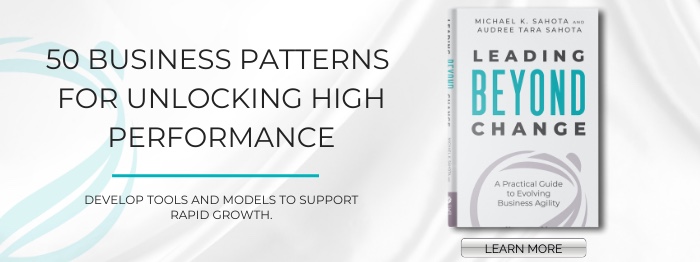Leadership Power is not about exercising power. It’s something very different. Consider very powerful leaders such as Mahatma Gandhi, Nelson Mandela or Mother Teresa. They were able to create great impact through their leadership, inspiring people that chose to follow them and their mission. They used their power as a leader for the good of humanity, they were able to create great change. How were they able to do this?
Leadership Power > Management Power
Management power is a traditional way of functioning, through command and control ways of leadership. It’s about beginning in a position or role of “leadership” that gives us the power to make decisions. We can hire people or fire people. We have control over others, either directly or indirectly.

There is a form of scare tactics creating a sense of power and control, where you “get” people to do things, or they will lose their job or face some sort of consequence. Unfortunately we have all had a big dose of this style of management our whole life.

Leadership power, on the other hand, is something anyone can have regardless of their role. It’s about the power or ability to create outcomes with the people around us. It’s about influence, not authority.
The Misuse of Power
In traditional management, power is used in a mix of healthy and unhealthy ways. Healthy use of power uplifts people and organizations. It puts people on a path toward growth, evolution, and success.
Misuse of power creates the opposite effect. It oppresses people and halts growth, organizational change, and evolution. Misuse of power puts organizations on a spiral of decay and dissent toward stagnation, complacency, and low performance.
Types of Leadership Power
#1 Presence
Leaders who have the power of presence are able to be the calm in the storm. They act as a grounding influence to stabilize everyone around them. Having presence is the ability to make decisions that are productive and healthy regardless of the situation.

People who emanate a sense of presence have a high level of psychological safety. All human beings are on a journey from lower to higher levels of psychological safety. As we move to higher levels, we’re able to stay calm, centered, and focused, no matter what’s happening around us.
#2 Openness
Great leaders are able to receive and understand all kinds of information. In contrast, typical or low-power leaders are not able to take in information that’s challenging or uncomfortable. They’re unwilling to hear things that may trigger fears and reactions. Low-power leaders tend to stay committed to the status quo.
The ability to receive all information and consider, “Could this be true? Is this helpful?” allows us as leaders to get important signals. Then, we can know what in our environment we really need to pay attention to.
Openness is a key ingredient to discovering the reality of what’s happening around us. Our power as leaders is measured in part by how open we are to challenge even the most strongly held beliefs or assumptions.

At SHIFT314 we ask, “Do you want plans made from distortion and lies or from the reality of the organization?” The truth may be uncomfortable, yet from this place we can make plans that will be successful.
#3 Awareness
Typical leaders are aware of only a small fraction of what’s actually happening around them: they only listen to the dialogue – what was actually said. In contrast, Evolutionary Leaders are able to read between the lines and listen to the music, not just the words. They have an understanding that allows them to address the reality of what’s really happening. They’re not limited to a narrow band of information.
These conscious leaders also become more in tune with their inner state of being: body sensation, emotions, and thought processes. They use awareness to interrupt the subconscious behavior patterns that are interfering with their leadership. We have created the Evolutionary Mindset, as an extension of Carol Dweck’s works on growth mindset.

#4 Influence
Our ability to influence the people around us and our organizations to pursue healthy, beneficial courses of action is the most important measure of our leadership power. It’s not about trying to convince people to do what we want. It’s about the ability to create an aligned movement toward what is beneficial for all.
The development of influence critically depends on our ability to let go of our agenda, biases, and egotistical attachments. To lead through influence, we must create a space where we value the greater good more than our own needs. A leader who leads through influence also has the ability to develop leaders around them. They are natural mentors that know and develop the brilliance within others.
Our power as a leader will increase to the extent that we can uplift all those around us. People value leaders who serve the system and know the value of the people in the system. It’s not as simple as servant leadership, it’s much more subtle than that. It’s not about being a servant. It’s more about being a steward and using authority and power for the good of the system.
#5 Willingness to Evolve
The final measure of leadership power is our own willingness to grow, evolve, and develop all the other dimensions of leadership power shared here. This is how we inspire others.

Our commitment to our own evolution and growth acts as inspiration for others. Helping an organizational system evolve that requires that people evolve. Our power to help people evolve depends entirely on our own commitment to our own evolution. As a leader, we respect the position and honor the commitment to use our power for good. “With great power comes great responsibility.”
What About Relationship Power?
In our view, positive relationships are the emergent outcome of our focus and investment in other aspects of leadership power. High-quality, deeply trusting relationships are a reflection of our leadership power.

You can use this as a metrics for your own leadership role. In your relationships, are you..
- connected,
- authentic,
- valuing people,
- uplifting others,
- letting go of your agenda, and
- building trust?
Do people…
- gravitate to you,
- come to you for advice,
- give you responsibility, and
- respect you as a holder of the system?
Traditional leadership talks about the importance of focusing on relationships. In our view, great relationships are just a reflection of our focus and dedication to evolving our leadership power. It’s about the commitment to showing up as an evolved leader.
Relationships are not to be gamified, hacked, manipulated, tricked, or five-stepped — that’s not how relationships work. They’re based on who we are, how we show up and how we care for others and the environment.

Final Thoughts
As we progress on our journey, we realize that leadership power is not external. It’s not something that’s held over somebody else. That kind of power will not lead to success or great leadership. The most important power is that which is internal.
The power and authority given to us to lead others comes with the responsibility to lead ourselves first. Consciously working to evolve oneself is what builds the respect, right, and capability to lead others. This requires letting go of attachment to our own agenda in service to the people who make up the organization.
An Evolutionary Leader has the capability. To uplift others, to create incredible work environments where people are happy, healthy and respected for their participation. This is true leadership power.
It’s the light that shines from us that inspires, uplifts, and creates.
It allows us to be a real leader
by checking behind us to see who’s willingly following.

Leaders who are consciously using their power for the good of the people and the system earn the ability to influence through how they show up as holders of a system, nurturing the brilliance of others. By creating the environment where everyone wants to show up as their best self, because it is molded through the behavior of the leader.
This is a powerful transmission that extends beyond an organization. This evolutionary behavior extends through peoples homelife, relationships with family, friends and the society they live in.



